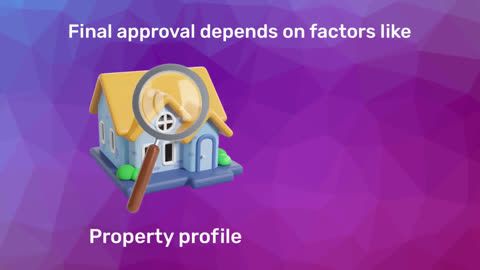What is the Jantri rate?
The Jantri rate is the minimum value at which a property can be registered with the government. It is set by the Gujarat government and is used to calculate the stamp duty and registration fees during property transactions. Essentially, the Jantri rate ensures that properties are not undervalued, which helps in preventing tax evasion and maintaining a transparent property market. For property owners and potential buyers in Rajkot, being aware of the current Jantri rate is essential for accurate financial planning and compliance with legal requirements.Importance of Jantri rate in Rajkot
Rajkot, a thriving city in Gujarat, is known for its rich cultural heritage and rapid urban development. As the city expands, so does its real estate market, making it crucial for property owners to stay updated on the Jantri rate. Here are some reasons why the Jantri rate is important in Rajkot:1. Fair property valuation: The Jantri rate ensures that all property transactions in Rajkot are conducted at a fair and transparent value. By setting a minimum value for property registration, it prevents the underreporting of property prices, thereby protecting the interests of both the government and property owners.
2. Revenue generation: The government generates significant revenue through stamp duty and registration charges, which are calculated based on the Jantri rate. This revenue is essential for funding public projects and infrastructure development in Rajkot.
3. Market stability: The Jantri rate helps stabilise the real estate market by providing a consistent benchmark for property valuations. This consistency prevents speculative practices that could lead to market volatility and price bubbles.
4. Financial planning: For potential homebuyers, knowing the Jantri rate is crucial for financial planning. It helps in estimating the total cost of property acquisition, including stamp duty and registration fees. Additionally, understanding the Jantri rate can aid in determining the amount of a home loan required to finance the purchase.
How is the Jantri rate Calculated in Rajkot?
The Jantri rate in Rajkot is determined by the Gujarat government's revenue department, taking into account several factors to ensure it reflects the current market conditions accurately:1. Location: The Jantri rate varies depending on the property's location. Properties in prime areas of Rajkot, such as commercial hubs or well-developed residential neighborhoods, typically have higher Jantri rates compared to those in more rural or less developed areas.
2. Type of property: Different Jantri rates are applied to residential, commercial, and agricultural properties. The government considers the land's purpose to set an appropriate rate that reflects its value.
3. Market value: The prevailing market value of properties in Rajkot is considered when determining the Jantri rate. This ensures that the rate is aligned with the actual transaction values in the market.
4. Development index: The level of infrastructure development in the area, such as roads, public transport, schools, and hospitals, also influences the Jantri rate. Areas with better infrastructure typically have higher Jantri rates due to increased demand.
5. Government policies: New government policies, infrastructure projects, or urban development plans can impact the Jantri rates. For instance, areas identified for new development projects or those near proposed metro lines may see an increase in their Jantri rates.
These factors are periodically reviewed and updated to ensure that the Jantri rate remains relevant and reflective of current market conditions.
Understanding the Jantri rate system in Rajkot
The Jantri rate system in Rajkot is designed to bring uniformity and transparency to property valuations. It serves as a safeguard against the undervaluation of properties, which can lead to revenue losses and legal complications. Here’s a closer look at how the system functions:1. Fixed minimum value: The Jantri rate sets the minimum value for property transactions. While properties can be sold for a price higher than the Jantri rate, they cannot be registered for a value lower than this rate. This ensures that all transactions are conducted at a fair minimum standard.
2. Regular updates: The government periodically revises the Jantri rates to reflect changes in the market. This keeps the system dynamic and responsive to the real estate market's fluctuations, ensuring that the rates are always aligned with current property values.
3. Public access: Jantri rates are publicly accessible through the official Gujarat government website. This transparency allows buyers and sellers to check the rates before engaging in any property transaction, ensuring that they are fully informed.
4. Impact on financing: For buyers seeking a home loan, the Jantri rate is critical as it affects the stamp duty and registration costs, which are part of the overall property acquisition cost. Understanding these rates can help buyers budget effectively and avoid any financial surprises during the purchase process.
How to find Jantri rate for a property in Rajkot
If you are planning to buy or sell property in Rajkot, it’s essential to know the current Jantri rate to ensure that your transaction complies with government regulations. Here’s how you can check the Jantri rate for Rajkot:1. Visit the official website: The Gujarat government has an official portal where you can check the Jantri rates for different regions, including Rajkot.
2. Select the district and area: Once on the portal, you will need to select the district (Rajkot) and the specific area where the property is located.
3. Enter property details: Provide details such as the type of property and its precise location to retrieve the Jantri rate.
4. View and download: The rate for the selected area will be displayed, which you can view and download for future reference.
This information is crucial not only for understanding the minimum value at which your property can be registered but also for estimating the stamp duty and registration fees that you will need to pay.
Navigating property transactions with Jantri rate Rajkot
Once you have a clear understanding of the Jantri rate in Rajkot, the next step is to navigate your property transaction effectively. Whether you are a buyer or a seller, understanding how the Jantri rate affects your deal is essential.1. For buyers: As a buyer, the Jantri rate gives you a baseline value for the property. While the market value may be higher or lower, the Jantri rate ensures that you do not underreport the property value for stamp duty purposes. Knowing the Jantri rate also helps in negotiating the final price with the seller. Additionally, understanding the Jantri rate is crucial when applying for a home loan, as it helps determine the amount you may need to borrow.
2. For sellers: Sellers can use the Jantri rate as a reference point to set a fair asking price for their property. It also helps in providing transparency to potential buyers, making the transaction smoother and more straightforward.
3. Stamp duty and registration: Both buyers and sellers need to be aware that the stamp duty and registration fees are calculated based on the higher of the Jantri rate or the agreed-upon sale price. Therefore, accurate knowledge of the Jantri rate is essential to avoid any discrepancies or legal issues during the registration process.
4. Financial products: Understanding the Jantri rate is also important for those considering additional financial products, such as property insurance or mortgage insurance. These products often rely on the property's declared value, which is influenced by the Jantri rate.
Financing your property purchase in Rajkot
While understanding the Jantri rate is essential when buying property in Rajkot, the next critical step is securing the necessary financing. Many homebuyers turn to home loans to cover the substantial costs involved in purchasing property.A home loan can effectively bridge the gap between your available savings and the total property cost, making homeownership more attainable. It’s important to carefully compare interest rates and loan terms from various financial institutions to ensure you secure the best deal.
Bajaj Housing Finance Home Loan
If you are looking to finance your property purchase in Rajkot, Bajaj Housing Finance Home Loan provides attractive interest rates and long repayment tenure. With Bajaj Housing Finance, you can benefit from competitive rates, fast processing, and a smooth experience, helping you achieve your goal of owning a home in Rajkot.Here are a few reasons why you should choose Bajaj Housing Finance Home Loan:
1. Competitive interest rates: Bajaj Housing Finance offers some of the most competitive interest rates in the market, ensuring that your home loan remains affordable throughout its tenure.
2. Flexible repayment options: With flexible repayment options, borrowers can choose a plan that best fits their financial situation, making it easier to manage monthly payments.
3. Quick and easy processing: The application process for a Bajaj Housing Finance Home Loan is streamlined and user-friendly, ensuring quick approval and disbursement.
Whether you are buying your first home, upgrading to a larger space, or investing in real estate, a Bajaj Housing Finance Home Loan can provide the financial support you need.




